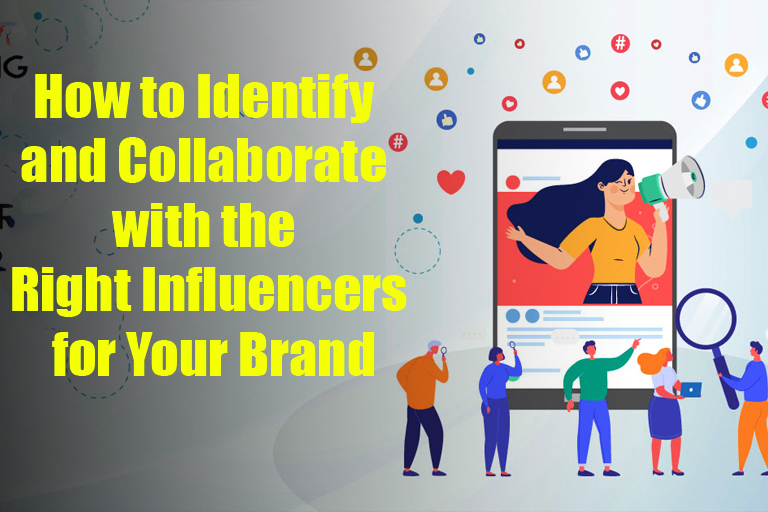In an era dominated by social media and digital communication, influencer marketing has emerged as a powerful tool for brands to connect with their target audiences. However, as consumers become more discerning, the need for authenticity in marketing has never been greater. Enter organic influencer marketing – a strategy that focuses on genuine connections and mutual value. In this comprehensive guide, we will explore the five crucial steps to successfully implement organic influencer marketing and build lasting brand relationships.

Step 1: Define Your Brand Story and Values
Before diving into the world of influencers, it’s essential to have a clear understanding of your brand story and values. What makes your brand unique? What do you stand for? Identifying and articulating these aspects will serve as the foundation for your influencer marketing strategy. Consumers are drawn to authenticity, and influencers who align with your brand’s ethos will be more effective in conveying your message.
When selecting influencers, prioritize those whose personal brand aligns seamlessly with your own. This alignment will make the collaboration feel more authentic to their followers, increasing the likelihood of a positive response. If your brand champions sustainability, for instance, partnering with influencers who are passionate about eco-friendly living will reinforce your commitment to those values.
Step 2: Identify the Right Influencers
Not all influencers are created equal, and the key to a successful organic influencer marketing campaign lies in selecting the right influencers for your brand. Begin by researching potential influencers within your niche. Tools like social media analytics and influencer marketing platforms can help you identify individuals whose audience demographics match your target market.
Look beyond follower count; engagement rates and the quality of the influencer’s content are equally important. Micro-influencers, who often have a smaller but highly engaged audience, can be particularly effective for organic marketing. Their followers view them as relatable and trustworthy, making the influencer’s recommendations more impactful.
Step 3: Foster Genuine Relationships
Building authentic relationships with influencers is at the core of organic influencer marketing. It’s not just about a transactional exchange of goods or payment for promotion; it’s about cultivating genuine connections. Start by engaging with potential influencers on social media platforms. Like, comment, and share their content to show appreciation for their work.
Once you’ve established a rapport, initiate a conversation about potential collaboration. Share your brand story, values, and the specific reasons you believe they would be a great fit for your campaign. By approaching influencers as partners rather than mere promoters, you set the stage for a more authentic collaboration.
Consider co-creating content with influencers, allowing them creative freedom within the framework of your brand guidelines. This collaborative approach not only produces more authentic content but also empowers influencers to showcase your product or service in a way that resonates with their audience.
Step 4: Authentic Content Creation
The heart of organic influencer marketing lies in the authenticity of the content. Encourage influencers to share personal experiences with your brand, highlighting how it fits seamlessly into their lives. User-generated content, such as unboxing videos, behind-the-scenes glimpses, or day-in-the-life features, can be particularly compelling.
Ensure that the content feels natural and aligns with the influencer’s usual style. Authenticity shines through when influencers genuinely enjoy and believe in the products or services they are endorsing. Authentic content not only resonates with the influencer’s audience but also enhances your brand’s credibility.
In addition to organic posts, consider hosting giveaways or contests with influencers. This fosters engagement and encourages their followers to interact with your brand. When the influencer and their audience perceive the collaboration as a genuine partnership, it becomes a powerful storytelling tool.
Step 5: Measure and Adapt
The final step in the organic influencer marketing journey is to measure the impact of your campaigns and adapt your strategy accordingly. Track key performance indicators (KPIs) such as engagement rates, website traffic, and sales attributed to influencer marketing efforts. Analyze the sentiment surrounding the campaign by monitoring comments and feedback.
Use these insights to refine your future influencer collaborations. Identify what worked well and replicate those elements in future campaigns. Conversely, if certain aspects did not yield the desired results, adjust your approach accordingly. The ability to adapt and evolve is crucial in the dynamic landscape of influencer marketing.
In conclusion, organic influencer marketing is not just a trend; it’s a fundamental shift towards more authentic and meaningful brand connections. By defining your brand story, choosing the right influencers, fostering genuine relationships, creating authentic content, and continuously measuring and adapting, you can build a robust influencer marketing strategy that resonates with your audience and stands the test of time. Embrace the power of authenticity, and watch as your brand flourishes in the digital age.
Read More:- How to Increase Instagram Followers in 2023
Read More:- Cracking the Code: Unveiling the Top 2023 TikTok Campaigns





